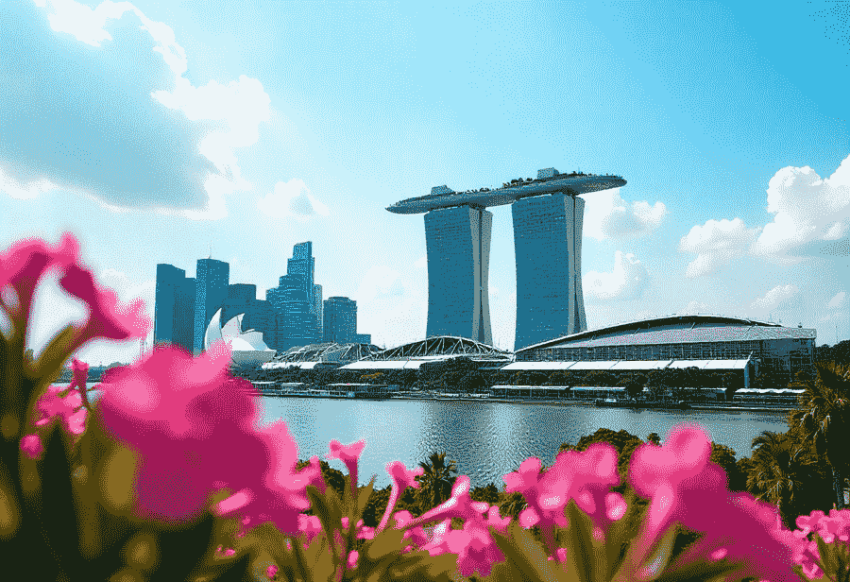Tuesday, August 5, 2025

As scorching temperatures grip Southeast Asia, travelers from Singapore, Indonesia, Malaysia, Vietnam, Cambodia, and the Philippines are escaping the heat by flocking to Harbin China’s iconic “Ice City.” With its refreshing 23°C summer climate, enhanced tourism infrastructure, direct charter flights, and simplified visa processes, Harbin has become a top destination for those seeking a cool, scenic, and hassle-free escape from unbearable tropical heat.
As most parts of China endure the intense sanfu period — traditionally recognized as the hottest stretch of summer — Harbin, the capital of Heilongjiang province, is becoming a seasonal sanctuary for travelers. Known for its icy winters and nicknamed China’s “Ice City,” Harbin defies seasonal expectations with a refreshing 23°C in the heart of summer. This unusually pleasant weather is drawing thousands of domestic and international visitors, especially from Southeast Asia, where travelers are increasingly seeking cool-climate destinations to escape scorching heat back home.
Tourism operators in Harbin have recorded strong inbound interest this year. In June alone, over 1,300 tourists from Southeast Asian nations arrived in the city. Historically, May, June, September, and October have served as peak months for inbound tourism from this region. However, this summer has seen a noticeable spike in visitors, driven by both the cool climate and expanding travel options.
Over 60 organized travel groups from Southeast Asia visited Harbin in June, representing countries such as Malaysia, Singapore, and Indonesia. This figure marks a 30% year-on-year increase, underscoring the city’s rapidly rising status as a seasonal escape. The trend is not expected to slow. More than 100 groups — totaling over 2,000 travelers — have already booked trips for September, with itineraries extending well into late 2026.
Harbin’s summer surge highlights both its growing seasonal charm and an increasingly diverse tourist base. While countries like Singapore and Malaysia remain key contributors, emerging markets such as Vietnam, Cambodia, the Philippines, and Laos are quickly gaining momentum as new sources of inbound travelers. These markets have shown a marked increase in activity this summer, signaling a shift in how Southeast Asian travelers explore Northeast Asia.
Several driving forces are propelling Harbin’s popularity among international tourists. One key factor is the rise in international charter flights. These flights have improved accessibility by reducing travel time and bypassing major transportation bottlenecks that once hindered inbound tourism. Cities across Southeast Asia now enjoy more direct and convenient flight connections to Harbin, enabling smoother travel experiences.
In parallel, tourism infrastructure in Harbin has undergone steady enhancement. Comfortable and diverse accommodation options cater to a wide range of travelers — from luxury-seeking groups to budget-conscious visitors. At the same time, the city has expanded its scenic offerings, including historical attractions, green urban parks, river cruises, cultural performances, and curated local experiences. The variety ensures tourists enjoy a holistic and comfortable stay regardless of age or travel style.
Another boost has come from visa policy changes. Streamlined inbound visa procedures have significantly lowered the barrier to entry for tourists from Southeast Asia and beyond. Easier application processes and reduced waiting periods are encouraging more spontaneous travel and group bookings, giving tour operators the flexibility to accommodate increased demand with less lead time.
Tourists are not limiting their experiences to Harbin alone. Many are extending their itineraries to explore the broader Heilongjiang region, venturing further north to scenic locations such as Yichun and Mohe. In past years, tourists often traveled to Changbai Mountain in Jilin province or coastal cities like Panjin in Liaoning after visiting Harbin. This year, however, more visitors are choosing to stay within Heilongjiang, driven by an interest in the province’s natural beauty, cooler temperatures, and curated travel experiences.
To serve this demand, tourism authorities and regional travel organizations have introduced unique experiences like a dedicated sightseeing train. The themed “Yichun” tourist train offers passengers a luxurious journey through the scenic northern landscapes of Heilongjiang. Designed exclusively for leisure travelers, the train features onboard dining, entertainment, and comfortable compartments aimed at enhancing the overall journey.
Since its launch in April, the tourist train has received wide acclaim. TThe first batch of travelers featured more than 100 visitors arriving from nations like Singapore and Malaysia. Passengers enjoyed an immersive cultural experience inspired by China’s film heritage and northern folklore. Due to its success, bookings for the sightseeing train have already been secured through the end of 2026. At least 10 additional themed journeys are planned for the coming months, offering travelers an entirely new way to explore the northeastern frontier of China.
Airport traffic provides further evidence of Harbin’s growing international appeal.Harbin’s immigration checkpoint recorded 61,000 cross-border passenger movements in July, reflecting a strong flow of both incoming and outgoing travelers. This represents a rise of nearly 10,000 travelers compared to June, with a year-on-year increase of 19.3%. Among those, nearly 10,000 were inbound foreign tourists — a 15.9% increase from the same period last year.
These statistics signal a shift in traveler preferences. Tourists are no longer solely chasing famous hotspots; they are also drawn to lesser-known cities offering better weather, lower costs, and unique cultural experiences. Harbin checks all these boxes while maintaining a distinct identity as a city shaped by Russian-influenced architecture, northern cuisine, and vibrant local festivals.
Travelers from Singapore, Indonesia, Malaysia, Vietnam, Cambodia, and the Philippines are flocking to Harbin to escape extreme tropical heat, drawn by its cool 23°C climate, improved tourism facilities, and easier travel access.
As the summer progresses and much of Asia continues to face record heat, Harbin stands out as a cool, accessible, and culturally rich escape. With continued investment in transportation, accommodation, and tourism innovation, the city is positioning itself as one of China’s leading year-round international destinations — no longer just a winter wonderland, but a rising summer star.






